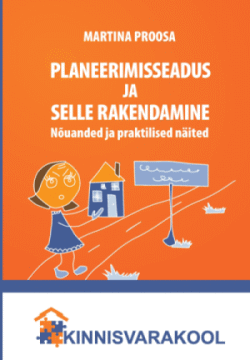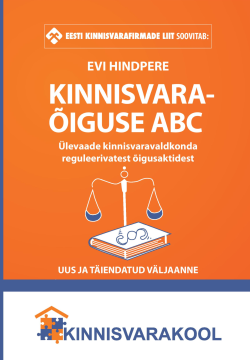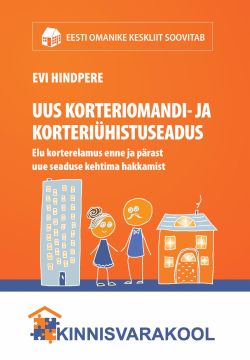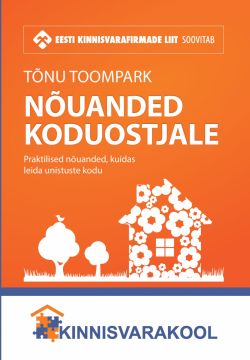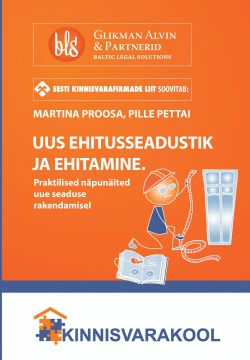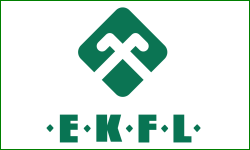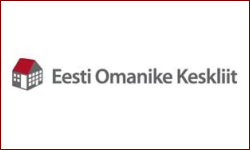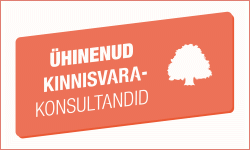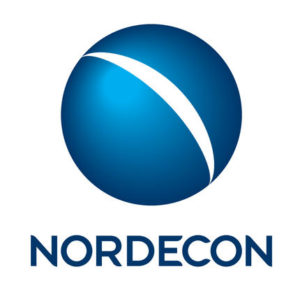 Compared to the same period last year, the 9 month results of the Group in 2020 are characterised by an increase in sales revenue and operating profit, which was achieved in the context of a slight decline in gross profitability through a reduction in operating costs and an increase in overall efficiency.
Compared to the same period last year, the 9 month results of the Group in 2020 are characterised by an increase in sales revenue and operating profit, which was achieved in the context of a slight decline in gross profitability through a reduction in operating costs and an increase in overall efficiency.
Despite the global COVID-19 pandemic and the resulting economic downturn, the impact on the results of the Group in the 9 months of 2020 is limited. Continuously, the weakening of Ukranian hryvnia and the resulting exchange rate loss affects the net result. The order book has increased year on year as compared to the same period of 2019 from 196 million euros to 215 million euros mainly due to the contracts form the public sector. Estimated two thirds of the order book are works to be performed in 2021 and 2022.
The COVID-19 pandemic has an increasing impact on the construction market and companies operating in the construction sector. The volume of new private orders has fallen considerably in the second and third quarters of 2020 and the start of construction of many objects in the tender phase has been delayed in the future. The pressure on the main contracting companies by demand side has increased as the market volume declines, but the expected decrease in the input prices offered by subcontractors has not occurred significantly. The situation has put the profit margin under pressure and brought into focus the reduction of the Group’s costs and the need to contribute more resources to automated digital solutions.
Condensed consolidated interim statement of financial position
| EUR ‘000 | 30 September 2020 | 31 December 2019 |
| ASSETS | ||
| Current assets | ||
| Cash and cash equivalents | 7,640 | 7,032 |
| Trade and other receivables | 61,532 | 37,563 |
| Prepayments | 4,208 | 1,813 |
| Inventories | 24,080 | 21,142 |
| Total current assets | 97,460 | 67,550 |
| Non-current assets | ||
| Investments in equity-accounted investees | 1,802 | 2,369 |
| Other investments | 26 | 26 |
| Trade and other receivables | 8,615 | 8,435 |
| Investment property | 6,301 | 5,530 |
| Property, plant and equipment | 18,451 | 19,002 |
| Intangible assets | 14,924 | 14,736 |
| Total non-current assets | 50,119 | 50,098 |
| TOTAL ASSETS | 147,579 | 117,648 |
| LIABILITIES | ||
| Current liabilities | ||
| Borrowings | 19,196 | 11,058 |
| Trade payables | 60,286 | 40,730 |
| Other payables | 9,440 | 7,954 |
| Deferred income | 7,550 | 6,391 |
| Provisions | 1,156 | 716 |
| Total current liabilities | 97,628 | 66,849 |
| Non-current liabilities | ||
| Borrowings | 8,187 | 16,326 |
| Trade payables | 98 | 98 |
| Other payables | 2,283 | 177 |
| Provisions | 1,339 | 1,425 |
| Total non-current liabilities | 11,907 | 18,026 |
| TOTAL LIABILITIES | 109,535 | 84,875 |
| EQUITY | ||
| Share capital | 14,379 | 14,379 |
| Own (treasury) shares | -660 | -660 |
| Share premium | 635 | 635 |
| Statutory capital reserve | 2,554 | 2,554 |
| Translation reserve | 2,544 | 1,169 |
| Retained earnings | 14,919 | 12,383 |
| Total equity attributable to owners of the parent | 34,371 | 30,460 |
| Non-controlling interests | 3,673 | 2,313 |
| TOTAL EQUITY | 38,044 | 32,773 |
| TOTAL LIABILITIES AND EQUITY | 147,579 | 117,648 |
Condensed consolidated interim statement of comprehensive income
| EUR ‘000 | 9M 2020 | Q3 2020 | 9M 2019 | Q3 2019 | 2019 | ||
| Revenue | 217,664 | 80,866 | 172,237 | 71,796 | 234,071 | ||
| Cost of sales | -208,149 | -77,358 | -164,516 | -67,369 | -222,302 | ||
| Gross profit | 9,515 | 3,508 | 7,721 | 4,427 | 11,769 | ||
| Marketing and distribution expenses | -386 | -184 | -635 | -137 | -784 | ||
| Administrative expenses | -5,312 | -1,452 | -4,668 | -1,620 | -6,837 | ||
| Other operating income | 273 | 95 | 128 | 61 | 315 | ||
| Other operating expenses | -138 | -28 | -48 | -28 | -193 | ||
| Operating profit | 3,952 | 1,939 | 2,498 | 2,703 | 4,270 | ||
| Finance income | 270 | 21 | 1,215 | 720 | 1,277 | ||
| Finance costs | -2,102 | -861 | -1,006 | -343 | -1,219 | ||
| Net finance costs/income | -1,832 | -840 | 209 | 377 | -58 | ||
| Share of profit of equity-accounted investees | 966 | 487 | 622 | 370 | 585 | ||
| Profit before income tax | 3,086 | 1,586 | 3,329 | 3,450 | 4,913 | ||
| Income tax expense | -82 | 0 | -453 | 0 | -764 | ||
| Profit for the period | 3,004 | 1,586 | 2,876 | 3,450 | 4,149 | ||
| Other comprehensive income: Items that may be reclassified subsequently to profit or loss |
|||||||
| Exchange differences on translating foreign operations | 1,375 | 557 | -777 | -514 | -823 | ||
| Total other comprehensive income/expense | 1,375 | 557 | -777 | -514 | -823 | ||
| TOTAL COMPREHENSIVE INCOME | 4,379 | 2,143 | 2,099 | 2,936 | 3,326 | ||
| Profit attributable to: | |||||||
| – Owners of the parent | 1,040 | 1,197 | 2,532 | 3,325 | 3,378 | ||
| – Non-controlling interests | 1,964 | 389 | 344 | 125 | 771 | ||
| Profit for the period | 3,004 | 1,586 | 2,876 | 3,450 | 4,149 | ||
| Total comprehensive income attributable to: | |||||||
| – Owners of the parent | 2,415 | 1,754 | 1,755 | 2,811 | 2,555 | ||
| – Non-controlling interests | 1,964 | 389 | 344 | 125 | 771 | ||
| Total comprehensive income for the period | 4,379 | 2,143 | 2,099 | 2,936 | 3,326 | ||
| Earnings per share attributable to owners of the parent: | |||||||
| Basic earnings per share (EUR) | 0.03 | 0.04 | 0.08 | 0.10 | 0.11 | ||
| Diluted earnings per share (EUR) | 0.03 | 0.04 | 0.08 | 0.10 | 0.11 | ||
Condensed consolidated interim statement of cash flows
| EUR ‘000 | 9M 2020 | 9M 2019 |
| Cash flows from operating activities | ||
| Cash receipts from customers | 267,488 | 193,567 |
| Cash paid to suppliers | -238,592 | -165,291 |
| VAT paid | -8,245 | -4,606 |
| Cash paid to and for employees | -20,849 | -17,332 |
| Income tax paid | -81 | -149 |
| Net cash used in/from operating activities | -279 | 6,189 |
| Cash flows from investing activities | ||
| Paid on acquisition of property, plant and equipment | -184 | -216 |
| Proceeds from sale of property, plant and equipment | 246 | 215 |
| Acquisition of intangible assets | -2 | 0 |
| Acquisition of a subsidiary | -2 | 0 |
| Cash received on acquisition of a subsidiary | 3,605 | 0 |
| Loans provided | -17 | -14 |
| Repayment of loans provided | 43 | 9 |
| Dividends received | 251 | 489 |
| Interest received | 8 | 6 |
| Net cash from investing activities | 3,948 | 489 |
| Cash flows from financing activities | ||
| Proceeds from loans received | 2,333 | 3,036 |
| Repayment of loans received | -1,949 | -3,245 |
| Lease payments made | -2,167 | -2,400 |
| Interest paid | -790 | -744 |
| Dividends paid | -472 | -2,360 |
| Net cash used in financing activities | -3,045 | -5,713 |
| Net cash flow | 624 | 965 |
| Cash and cash equivalents at beginning of period | 7,032 | 7,678 |
| Effect of movements in foreign exchange rates | -16 | -13 |
| Increase in cash and cash equivalents | 624 | 965 |
| Cash and cash equivalents at end of period | 7,640 | 8,630 |
Financial review
Financial performance
Nordecon ended the first nine months of 2020 with a gross profit of 9,515 thousand euros (9M 2019: 7,721 thousand euros). Gross margin was 4.4% for nine months (9M 2019: 4.5%) and 4.3% for the third quarter (Q3 2019: 6.2%). In the Buildings segment, gross margin decreased year on year, dropping to 4.7% for nine months and 4.0% for the third quarter (9M 2019: 5.4% and Q3 2019: 5.1%). The decline is mainly attributable to a loss-making housing development project completed in Sweden. In the Infrastructure segment, gross margin improved year on year, rising to 4.6% for nine months and 5.9% for the third quarter (9M 2019: 4.0% and Q3 2019: 9.2%). The segment’s nine-month result was influenced by an earlier start of the road construction season and a strong order book. Despite the fact that market players’ capacity to produce asphalt concrete considerably exceeds market demand, the Group’s asphalt concrete output grew year on year, providing cover for fixed costs, the largest share of which is made up of costs related to the plant and equipment required for asphalt concrete production and laying.
The Group’s administrative expenses for the first nine months of 2020 totalled 5,312 thousand euros. Compared to the same period in 2019, administrative expenses increased by around 14% (9M 2019: 4,668 thousand euros). The rise is attributable to growth in personnel expenses and depreciation as well as the fact that Embach Ehitus OÜ became a subsidiary. The ratio of administrative expenses to revenue (12 months rolling) was 2.7, remaining virtually the same as a year earlier (9M 2019: 2.8%).
The Group’s operating profit for the first nine months of 2020 was 3,952 thousand euros (9M 2019: 2,498 thousand euros). Operating margin improved year on year, rising to 1.8% for the nine months of 2020 (9M 2019: 1.5%). EBITDA amounted to 6,512 thousand euros (9M 2019: 4,732 thousand euros).
Finance income and costs of the period continued to be influenced by exchange rate fluctuations in the Group’s foreign markets, particularly the movements in the exchange rate of the Ukrainian hryvnia, which weakened against the euro by approximately 20%. In contrast to the first nine months of 2019 when the Group earned a foreign exchange gain, in the reporting period the translation of loans provided to the Ukrainian subsidiaries in euros resulted in a foreign exchange loss of 1,255 thousand euros (9M 2019: an exchange gain of 1,040 thousand euros). The Swedish krona weakened against the euro by around 1%. The foreign exchange gain recognised in finance income in connection with the translation of a loan provided to the Swedish subsidiary in euros amounted to 84 thousand euros (9M 2019: a foreign exchange loss of 258 thousand euros).
The Group’s net profit amounted to 3,004 thousand euros (9M 2019: 2,876 thousand euros). The profit attributable to owners of the parent, Nordecon AS, was 1,040 thousand euros (9M 2019: 2,532 thousand euros).
Cash flows
In the first nine months of 2020, operating activities produced a net cash outflow of 279 thousand euros (9M 2019: an inflow of 6,189 thousand euros). The key factor that affects operating cash flow is the mismatch between the settlement terms agreed with customers and suppliers. Operating cash flow is also strongly influenced by the fact that the contracts signed with most public and private sector customers do not require them to make advance payments while the Group has to make prepayments to subcontractors and materials suppliers. In 2020, the share of prepayments has increased due to the COVID-19 pandemic. Cash inflow is also reduced by contractual retentions, which extend from 5 to 10% of the contract price and are released at the end of the construction period only.
Investing activities resulted in a net cash inflow of 3,948 thousand euros (9M 2019: an inflow of 489 thousand euros). The transaction with the strongest impact was the transformation of Embach Ehitus OÜ from an associate into a subsidiary, which generated cash inflow of 3,605 thousand euros. Cash flow was also influenced by payments made for the acquisition of property, plant and equipment of 184 thousand euros (9M 2019: 216 thousand euros) and proceeds from the sale of property, plant and equipment of 246 thousand euros (9M 2019: 215 thousand euros). Dividends received amounted to 251 thousand euros (9M 2019: 489 thousand euros).
Financing activities generated a net cash outflow of 3,045 thousand euros (9M 2019: an outflow of 5,713 thousand euros). The largest items were loan and lease payments and dividends paid. Proceeds from loans received totalled 2,333 thousand euros, comprising the use of the overdraft facility and development loans (9M 2019: 3,036 thousand euros). Loan repayments totalled 1,949 thousand euros (9M 2019: 3,245 thousand euros), consisting of regular repayments of long-term investment and development loans. Lease payments totalled 2,167 thousand euros (9M 2019: 2,400 thousand euros). Dividends paid in the first nine months of 2020 amounted to 472 thousand euros (9M 2019: 2,360 thousand euros).
The Group’s cash and cash equivalents totalled 7,640 thousand euros at 30 September 2020 (30 September 2019: 8,630 thousand euros).
Key financial figures and ratios
| Figure/ratio | 9M 2020 | 9M 2019 | 9M 2018 | 2019 | |
| Revenue (EUR ‘000) | 217,664 | 172,237 | 167,588 | 234,071 | |
| Revenue change | 26.4% | 2.8% | -4.2% | 4.7% | |
| Net profit (EUR ‘000) | 3,004 | 2,876 | 2,154 | 4,149 | |
| Net profit attributable to owners of the parent (EUR ‘000) |
1,040 | 2,532 | 1,972 | 3,378 | |
| Weighted average number of shares | 31,528,585 | 31,528,585 | 30,986,585 | 31,528,585 | |
| Earnings per share (EUR) | 0.03 | 0.08 | 0.06 | 0.11 | |
| Administrative expenses to revenue | 2.4% | 2.7% | 3.0% | 2.9% | |
| Administrative expenses to revenue (rolling) | 2.7% | 2.8% | 2.9% | 2.9% | |
| EBITDA (EUR ‘000) | 6,512 | 4,732 | 3,879 | 7,311 | |
| EBITDA margin | 3.0% | 2.7% | 2.3% | 3.1% | |
| Gross margin | 4.4% | 4.5% | 4.0% | 5.0% | |
| Operating margin | 1.8% | 1.5% | 1.4% | 1.8% | |
| Operating margin excluding gain on asset sales | 1.8% | 1.4% | 0.8% | 1.7% | |
| Net margin | 1.4% | 1.7% | 1.3% | 1.8% | |
| Return on invested capital | 6.2% | 5.8% | 5.4% | 10.0% | |
| Return on equity | 8.5% | 8.8% | 6.4% | 12.5% | |
| Equity ratio | 25.8% | 25.9% | 28.6% | 27.9% | |
| Return on assets | 2.3% | 2.5% | 1.9% | 3.7% | |
| Gearing | 30.2% | 30.0% | 29.1% | 33.8% | |
| Current ratio | 1.00 | 0.93 | 0.96 | 1.01 | |
| As at | 30 Sept 2020 | 30 Sept 2019 | 30 Sept 2018 | 31 Dec 2019 | |
| Order book (EUR ‘000) | 215,494 | 196,493 | 131,953 | 227,545 | |
Performance by geographical market
The revenue contribution of the Groups foreign markets increased year on year, rising to approximately 12% of the Group’s total revenue for the first nine months of 2020.
| 9M 2020 | 9M 2019 | 9M 2018 | 2019 | |
| Estonia | 88% | 91% | 94% | 89% |
| Sweden | 6% | 3% | 2% | 5% |
| Finland | 5% | 4% | 1% | 4% |
| Ukraine | 1% | 2% | 3% | 2% |
The revenue contribution of the Swedish market grew significantly year on year. During the period, we provided services under three building construction contracts secured as a general contractor and one concrete works subcontract. Finnish revenues grew somewhat, underpinned by concrete works subcontracts signed in the building construction segment and two general contractor’s contracts signed in the agriculture sector. Revenue generated in the Ukrainian market and its proportionate share in the Group’s total revenue decreased.
Geographical diversification of the revenue base is a consciously deployed strategy by which we mitigate the risks resulting from excessive reliance on one market. However, conditions in some of our chosen foreign markets are also volatile and have a strong effect on our current results. Increasing the contribution of foreign markets is one of Nordecon’s strategic targets.
Performance by business line
Segment revenues
The Group ended the first nine months of 2020 with revenue of 217,664 thousand euros, a roughly 26% improvement on the 172,237 thousand euros generated in the first nine months of 2019. Revenue growth was driven by the strong performance of the Buildings segment, which increased its revenue by 38%. Based on the size of its order book, revenue growth in the Buildings segment was expected. The Infrastructure segment’s revenue, on the other hand, decreased by 2% compared to the same period last year.
The limited volume of infrastructure construction projects, which continues to affect the entire Estonian construction market, is also reflected in our revenue structure. In in the first nine months of 2020, our Buildings and Infrastructure segments generated revenue of 169,439 thousand euros and 48,025 thousand euros, respectively. The corresponding figures for in the first nine months of 2019 were 122,825 thousand euros and 49,138 thousand euros.
| Operating segments | 9M 2020 | 9M 2019 | 9M 2018 | 2019 |
| Buildings | 75% | 70% | 71% | 70% |
| Infrastructure | 25% | 30% | 29% | 30% |
Subsegment revenues
In the Buildings segment, all subsegments delivered lesser or greater year-on-year revenue growth. The fastest-growing subsegment was public buildings, which increased its revenue by 78%. It was also the largest revenue contributor, generating approximately a third of total segment revenue. During the period, we completed and delivered on time the Estonian Academy of Security Sciences and the University of Tartu Learning Centre in Narva, phase I of Kindluse Kool – a basic school in Järveküla near Tallinn, and the Annelinn upper secondary school in Tartu. The largest projects in progress in the public buildings subsegment are the construction of a storage complex for the defence forces’ base at Tapa, a sports and health centre at Kohtla-Järve, a family health centre in Tartu, and an extension to the building of the Estonian Foreign Intelligence Service in Rahumäe tee in Tallinn, and the reconstruction of two schools in East Ukraine.
The largest projects of the commercial buildings subsegment that generated revenue in the reporting period are in Tallinn. The construction of a seven-floor commercial building in Rotermann City continues. We completed and delivered on time the building of Terminal D in the Old City Harbour, phase I of the Porto Franco commercial and office development next to the Admiralty Basin, and a multi-storey car park at Sepapaja 1 in Tallinn.
A significant share of our Estonian apartment building projects is located in Tallinn. During the period under review, the largest of them were the design and construction of the first two phases of the Kalaranna quarter, and the design and construction of the Tiskreoja residential area on the western border of Tallinn. Similarly to previous periods, a major share of the subsegment’s revenue came from the construction of apartment buildings in Sweden.
We continue to build our own housing development projects in Tallinn and Tartu (reported in the apartment buildings subsegment). During the period, we completed a five-floor apartment building with 24 apartments at Võidujooksu 8c in Tallinn (www.voidujooksu.ee). Revenue from our own real estate development operations amounted to 2,455 thousand euros (9M 2019: 6,388 thousand euros). In carrying out our own real estate development activities, we monitor closely potential risks in the housing development market.
Although the amount and share of revenue generated by the industrial and warehouse facilities subsegment remained modest compared to other subsegments, its revenue grew more than two times compared to the same period in 2019. Still, the values of projects in progress are small, amounting to 2 million euros on average. Based on the order book, we thus expect that the subsegment’s revenue contribution will remain modest in 2020.
| Revenue breakdown in the Buildings segment | 9M 2020 | 9M 2019 | 9M 2018 | 2019 |
| Public buildings | 36% | 28% | 27% | 29% |
| Apartment buildings | 28% | 30% | 22% | 27% |
| Commercial buildings | 25% | 35% | 36% | 36% |
| Industrial and warehouse facilities | 11% | 7% | 15% | 8% |
Although the largest revenue contributor in the Infrastructure segment is still road construction and maintenance, both the proportion and amount of its revenue have decreased year-on-year. A significant share of its revenue results from road rehabilitation contracts of 2 to 3 million euros each. The largest projects in progress include a contract secured in 2019 for the construction of the Kernu bypass as well as the Kernu filling station and Haiba junctions on the Tallinn-Pärnu-Ikla road, and a contract signed this year for the construction of the Väo junction on the eastern border of Tallinn. In addition to road construction and maintenance, the subsegment builds infrastructure assets for the defence forces, and improves forest roads under a number of small contracts signed with the State Forest Management Centre. We also continue to provide road maintenance services in Järva and Hiiu counties and the Kose maintenance area in Harju county.
The revenue of the other engineering subsegment is strongly influenced by the construction of foundations for 73 wind turbines in the Nysäter wind farm, which is being built in northern Sweden, near Sundsvall.
During the period, work continued on the construction of a 640-metre waterfront promenade at Sillamäe, which accounts for a significant share of the revenue of the specialist engineering subsegment.
| Revenue breakdown in the Infrastructure segment | 9M 2020 | 9M 2019 | 9M 2018 | 2019 |
| Road construction and maintenance | 77% | 81% | 91% | 78% |
| Other engineering | 18% | 16% | 6% | 18% |
| Specialist engineering | 4% | 0% | 0% | 1% |
| Environmental engineering | 1% | 3% | 3% | 3% |
Order book
The Group’s order book (backlog of contracts signed but not yet performed) stood at 215,494 thousand euros at 30 September 2020, a 10% increase year on year. In the third quarter, we signed new contracts of 87,751 thousand euros (Q3 2019: 69,894 thousand euros).
| As at | 30 Sept 2020 | 30 Sept 2019 | 30 Sept 2018 | 31 Dec 2019 |
| Order book (EUR ‘000) | 215,494 | 196,493 | 131,953 | 227,545 |
The breakdown of the order book between the two segments has not changed significantly: the volume of contracts secured by the Buildings segment is still substantially larger, accounting for 79% of the Group’s total order book while contracts secured by the Infrastructure segment account for 21% (30 September 2019: 80% and 20%, respectively). Compared to 30 September 2019, the order books of both segments have increased. The order book of the Buildings segment has grown by around 7% and that of the Infrastructure segment by 20%. Around two thirds of the Group’s order book is made up of projects that will continue in 2021 and 2022.
The order book of the public buildings subsegment accounts for roughly a half of the order book of the Buildings segment. Its growth is mainly attributable to a contract signed at the beginning of the third quarter for the construction of phase III of the Maarjamõisa Medical Campus of the Tartu University Hospital. In phase III, the building complex at L. Puusepa 8 will be added two new blocks: the M Block, which will house a children’s hospital, and the C Block, which will house an ear clinic, a women’s clinic, a family centre, and a day surgery. The cost of the contract is 47.3 million euros. In addition, in the third quarter we signed contracts for the construction of an academic building for an upper secondary school in Kuressaare on the island of Saaremaa and for the design and construction of a barracks for 300 people in the defence forces base at Paldiski. The order books of the apartment buildings and the industrial and warehouse facilities subsegments have remained at the same level as at 30 September 2019. A major share of the order book of the apartment buildings subsegment is made up of a contract of around 40 million euros for the design and construction of the first two phases of the Kalaranna quarter in Tallinn. A significant share of the order book of the industrial and warehouse facilities subsegment is made up of contracts for the construction of a dairy complex for E‑Piim in Paide and two shed complexes in Finland. The order book of the commercial buildings subsegment has decreased substantially year on year. Its largest projects in progress are the construction of a new seven-floor commercial building in Rotermann City in Tallinn and a store building for Lidl Eesti OÜ in Tartu.
Contracts secured by the road construction and maintenance subsegment account for 74% of the order book of the Infrastructure segment. The size of the order book is strongly influenced by a contract secured in the second quarter for the construction of the Väo junction on the eastern border of Tallinn. Nordecon Group continues to provide road maintenance services in three road maintenance areas: Järva, Hiiu and Kose. We have signed a new five-year contract for maintaining national roads in the Järva maintenance area. The contract involves year-round maintenance of around 950 km of national roads in Järva county. Based on the rates for 2020, the total cost of the contract is approximately 10.7 million euros. Other engineering contracts account for 15% of the order book of the Infrastructure segment. A major share of the order book of the other engineering subsegment is made up of a contract secured in 2019 for the construction of foundations for 73 wind turbines in the Nysäter wind farm in northern Sweden, near Sundsvall.
A large part of the contracts signed in the third quarter came from the public sector. The volume of work secured from the private sector has decreased sharply and the commencement of many projects that have been announced has been postponed. Customers are increasingly expecting that general contractors should lower their prices but the input prices charged by subcontractors have not decreased as anticipated. This has put profit margins under strong pressure. In an environment of stiff competition, we have avoided taking unjustified risks whose realisation in the contract performance phase would have an adverse impact on the Group’s results. Our main focus is on cost control and pre-construction and design activities in order to harness our professional competitive advantages.
Between the reporting date (30 September 2020) and the date of release of this report, Group companies have secured additional construction contracts in the region of 16,640 thousand euros.
People
Employees and personnel expenses
In the first nine months of 2020, the Group (the parent and the subsidiaries) employed, on average, 703 people, including 422 engineers and technical personnel (ETP). Headcount increased by around 2% compared with the same period in 2019. The number of engineers and technical personnel grew due to a change in the Group’s structure: Embach Ehitus OÜ became a subsidiary, which increased the group’s workforce by 40 employees.
Average number of employees at Group entities (including the parent and the subsidiaries):
| 9M 2020 | 9M 2019 | 9M 2018 | 2019 | |
| ETP | 422 | 413 | 425 | 414 |
| Workers | 261 | 276 | 272 | 273 |
| Total average | 703 |






